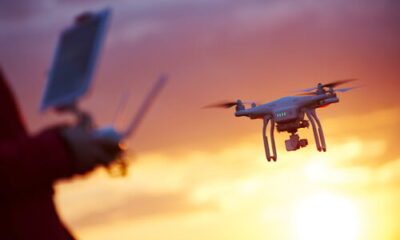Features
Lake District Hydro Energy
Hugo House takes a close look at profitable hydro microgeneration.
Hydro microgeneration is a fantastic example of how centuries-old technology can be updated to provide a 21st-century solution to meeting energy needs. And, with the Government’s new Feed-in Tariff (FiT) payments rewarding independent generators, generating electricity from water can also be profitable.
 Hugo House takes a close look at profitable hydro microgeneration.
Hugo House takes a close look at profitable hydro microgeneration.
Hydro microgeneration is a fantastic example of how centuries-old technology can be updated to provide a 21st-century solution to meeting energy needs. And, with the Government’s new Feed-in Tariff (FiT) payments rewarding independent generators, generating electricity from water can also be profitable.
Hydro technology has always relied on harnessing the kinetic energy produced as water flows downhill via rivers and streams. Flowing water is used to drive a small turbine that generates electricity. The faster the flow and the more water there is, the more energy can be produced.
Helping preserve Nature’s assets
One of the generators Good Energy works with is Docker Nook hill farm in Cumbria. The sheep farm is a great example of how home-grown power can change the energy landscape in the UK – making the most of natural assets while preserving them. The 14kW hydro generator is run by Mark Cropper, Managing Director of Ellergreen Hydro. After three years in development and costing £85,000, funded by a loan, Docker Nook’s hydro generator started turning in February 2010. It has a life span of around 50 years and, thanks to Good Energy’s SmartGen FiT scheme, Mark can earn around £12,000 a year in payments for the green energy he generates.
The installation also saves the farm around £250 to £350 in electricity bills a year. When the hydro scheme isn’t running – around 30 percent of the time – Mark buys electricity from Good Energy. Thanks to some high-tech additions, such as a self-cleaning intake (where the water enters from the source), Mark’s scheme demands minimal maintenance. He can monitor the generator’s performance remotely via the internet. A weather station, also connected to the internet, indicates when the turbine should and shouldn’t be generating electricity. As Mark says: “It’s just so simple once everything is in place. All you have to do is wait for rain!”
Installing modern technologies in an environment as natural, beautiful and rugged as the Lake District – an area that relies on tourism for much of its income – could be cause for concern. But, says Mark, “you can see almost nothing of the equipment”. Usually tucked up inaccessible hillsides, the concrete intakes are rarely visible from any distance. At Docker Nook, 200m of buried pipelines fall a total of 30m leading to a holding shed, which Mark has taken pains to ensure blends perfectly with the surrounding buildings.
For hill farms like Docker Nook to remain financially viable, diversification through other forms of income is urgently required. “Installing hydro is one of the best options to consider. It has been absolutely key to securing the future of Docker Nook,” says Mark. “It ensures an income regardless of how the farm performs and means that I have the finances to reinvest in preservation and conservation – maintaining traditional stone walls and SSSI [site of special scientific interest] woodland, as well as bringing back heather and other wildlife.”
How the FiT works
The Feed-in Tariff (or FiT) is a payment made to those choosing to generate their own renewable electricity. Once registered, generators are entitled to a sum of money for every unit of electricity they generate – even if it is used on site – and a further sum for the units they export to the grid. This makes investment in hydro very attractive because there is a guaranteed financial return as well as the savings made on electricity bills. A 15kW hydro system will earn at least 20.9 pence per kWh in 2011/12 under FiT, plus more for exported electricity – that translates to around £12,000 a year.
Hydro can be a constant, long-lasting and reliable way to generate energy, so landowners who have a fast-flowing stream or river on their land, particularly if there is a history of even small-scale hydro power generation, such as an old water mill, may wish to look into the possibilities. Around 17 percent of the renewable electricity Good Energy sources on behalf of its customers comes from hydro power, and, recognising that preservation of the natural environment is a key issue, the company has its own strict environmental criteria for any hydro development.
Costs for installing a hydro system are variable, depending on the location and the amount of electricity it can generate. According to the Energy Saving Trust a typical 5kW scheme suitable for an average home might cost £20,000 to £25,000 including installation. Thanks to the guaranteed income provided by the FiT, hydro can be a good investment.
To find out more, visit www.goodenergy.co.uk

































